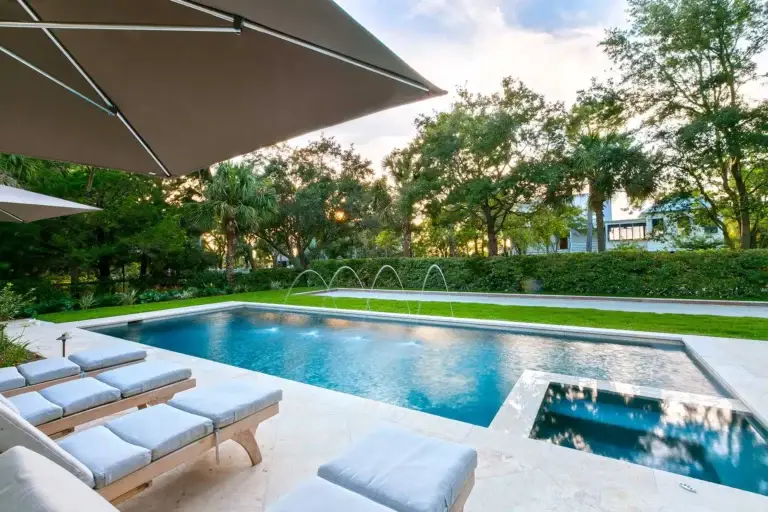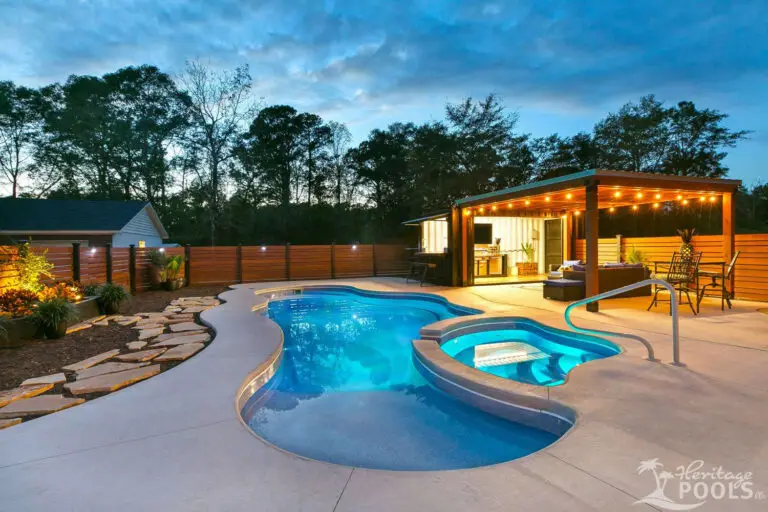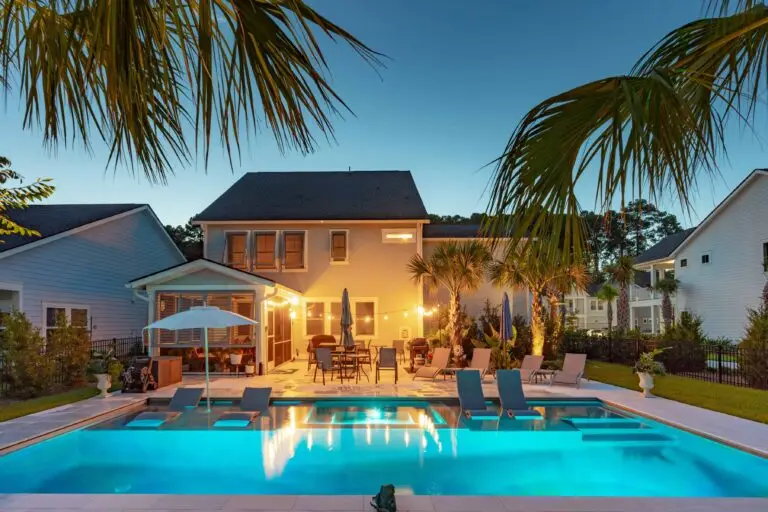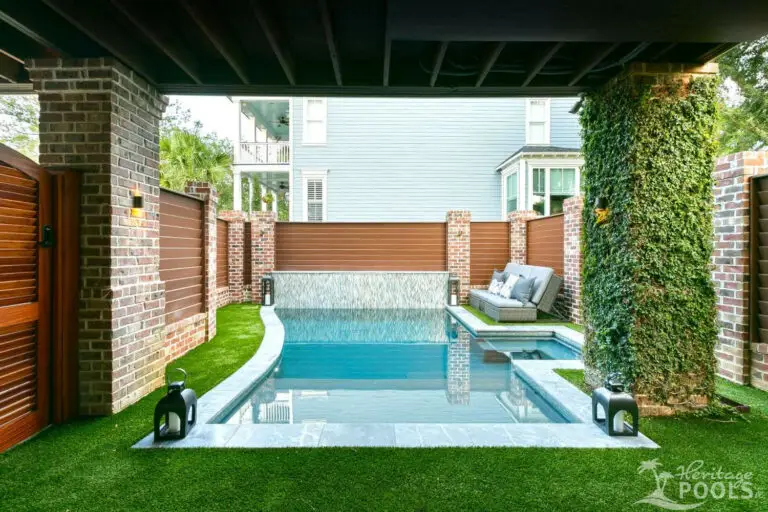If you own a pool, you know that it takes effort to keep it looking and functioning at its best. One way to enhance the beauty and health of your pool is by incorporating plants into its surroundings. However, not all plants thrive in a pool environment, and some require a lot of maintenance, which can be time-consuming and costly. That’s why it’s essential to choose plants that are low maintenance and can survive in the unique conditions of a pool area.
In this article, we’ll provide you with a comprehensive guide to low maintenance pool plants. You’ll learn about the benefits of incorporating plants into your pool area, including natural filtration, cost savings, and aesthetics. We’ll also provide you with a list of the top low maintenance pool plants, including the Snake Plant, Elephant Ear, Aloe Vera, and Bird of Paradise. Additionally, we’ll suggest other low maintenance plants to consider, such as ferns, bamboo, hibiscus, and palms.
We’ll conclude with tips on how to care for low maintenance pool plants, including watering frequency, fertilizing, pruning, and pest control. By the end of this article, you’ll have all the information you need to create a beautiful and healthy pool environment with low maintenance pool plants.
Benefits of Low Maintenance Pool Plants:
Incorporating low maintenance pool plants into your pool area has numerous benefits. First and foremost, they help oxygenate the pool water by releasing oxygen during photosynthesis. This can improve the overall health and quality of your pool water, making it safer and more pleasant to swim in. Additionally, plants act as natural filters by absorbing nutrients and harmful chemicals from the pool water, reducing the need for chemicals and cleaning. This can save you both time and money, as well as help to protect the environment.
Another significant benefit of low maintenance pool plants is their aesthetic value. They can add color, texture, and dimension to your pool area, making it more visually appealing and enjoyable. They can also create a natural and serene atmosphere, which can enhance relaxation and make your pool area feel like a private oasis.
Finally, low maintenance pool plants can be a cost-effective solution for pool landscaping. Because they require less maintenance and care, you won’t need to spend as much time or money on fertilizers, pesticides, and watering. They also tend to have a longer lifespan than high maintenance plants, which means you won’t need to replace them as frequently.
Overall, incorporating low maintenance pool plants into your pool area can be an excellent investment for both the health and beauty of your pool. In the next section, we’ll introduce you to some of the top low maintenance pool plants that are easy to care for and can thrive in a pool environment.
Explore our guide on creating a low maintenance pool landscape
Best Low Maintenance Pool Plants
Snake Plant
The Snake Plant, also known as Sansevieria, is a popular choice for pool areas due to its ability to withstand harsh conditions, including low light and high humidity. It has long, upright leaves that can grow up to several feet tall and come in a variety of patterns and colors, making it an attractive addition to any pool area. The Snake Plant can help purify the air by removing toxins and releasing oxygen, making it a beneficial addition to any outdoor space.
Care Tips: The Snake Plant is very low maintenance and doesn’t require much watering or fertilizing. It can tolerate low light and high humidity but prefers well-draining soil. It’s essential to avoid overwatering, as this can lead to root rot.
Elephant Ear
Elephant Ear, also known as Colocasia, is a tropical plant that can add a touch of the exotic to your pool area. It has large, heart-shaped leaves that can grow up to several feet wide and come in a variety of colors, including green, purple, and black. Elephant Ear can help provide shade and shelter for your pool area, making it a perfect choice for hot and sunny climates.
Care Tips: Elephant Ear prefers well-draining soil and regular watering, but can tolerate occasional dry spells. It also requires regular fertilizing to promote healthy growth. It’s important to protect Elephant Ear from cold temperatures, as it can be sensitive to frost.
Aloe Vera
Aloe Vera is a succulent plant that is well known for its healing properties. It has long, spiky leaves that can grow up to several feet tall and come in a variety of shades of green. Aloe Vera is an excellent choice for pool areas due to its ability to thrive in hot and dry conditions, as well as its ability to absorb harmful chemicals from the air.
Care Tips: Aloe Vera prefers well-draining soil and occasional watering. It can also benefit from regular fertilizing during the growing season. It’s essential to protect Aloe Vera from frost and cold temperatures, as it can be sensitive to extreme temperatures.
Bird of Paradise
Bird of Paradise, also known as Strelitzia, is a tropical plant that can add a touch of elegance and sophistication to your pool area. It has long, slender leaves that can grow up to several feet tall and come in a variety of shades of green. Bird of Paradise also produces stunning orange and blue flowers that resemble the shape of a bird, making it a unique addition to any pool area.
Care Tips: Bird of Paradise prefers well-draining soil and regular watering during the growing season. It also benefits from regular fertilizing to promote healthy growth and blooming. It’s important to protect Bird of Paradise from cold temperatures and frost, as it can be sensitive to extreme temperatures.

Other Low Maintenance Pool Plants to Consider:
Ferns
Ferns are an excellent choice for pool areas due to their ability to thrive in high humidity and shade. They come in a variety of shapes and sizes and can add a touch of softness and elegance to your pool area.
Bamboo
Bamboo is a fast-growing plant that can add a touch of tropical flair to your pool area. It’s also an excellent choice for providing shade and privacy.
Hibiscus
Hibiscus is a colorful and vibrant flowering plant that can add a touch of beauty and elegance to your pool area. It’s also an excellent choice for attracting pollinators such as butterflies and hummingbirds.
Palms
Palms are a classic choice for pool areas and can add a touch of tropical elegance to your outdoor space. They come in a variety of shapes and sizes and can provide shade and shelter for your pool area.
Tips for Caring for Low Maintenance Pool Plants
- Watering frequency: Most low maintenance pool plants require occasional watering, depending on the climate and the season. It’s essential to avoid overwatering, as this can lead to root rot and other problems. To determine if your plants need watering, check the soil’s moisture level by sticking your finger into the soil up to the first knuckle. If the soil feels dry, it’s time to water.
- Fertilizing: Low maintenance pool plants typically don’t require a lot of fertilizing, but they can benefit from occasional feeding during the growing season. Use a balanced, slow-release fertilizer and follow the package instructions for application rates.
- Pruning: Most low maintenance pool plants don’t require much pruning, but it’s important to remove any dead or damaged leaves to promote healthy growth. Use clean, sharp pruning shears and make clean cuts to avoid damaging the plant.
- Pest control: Low maintenance pool plants are generally resistant to pests and diseases, but it’s still essential to monitor them for any signs of problems. Use organic pest control methods, such as neem oil or insecticidal soap, to keep pests at bay.
Professional Care
Incorporating low maintenance pool plants into your pool area can provide numerous benefits, including natural filtration, cost savings, and aesthetics. The Snake Plant, Elephant Ear, Aloe Vera, and Bird of Paradise are all excellent choices for pool areas due to their ability to thrive in harsh conditions and provide unique beauty and interest.
If you’re considering a new pool project or renovation, it’s essential to consult with a professional designer who can help you create the perfect pool environment that fits your needs and preferences. At Heritage Pools, our experienced designers can work with you to choose the right low maintenance plants and other landscaping elements to create a beautiful and sustainable pool area that you can enjoy for years to come.
By following tips for care, including watering frequency, fertilizing, pruning, and pest control, you can ensure that your low maintenance pool plants thrive and enhance the health and beauty of your pool area. With a little bit of effort and attention, and the help of our designers at Heritage Pools, you can create the pool environment of your dreams. Contact us today to learn more about our pool design and landscaping services.




